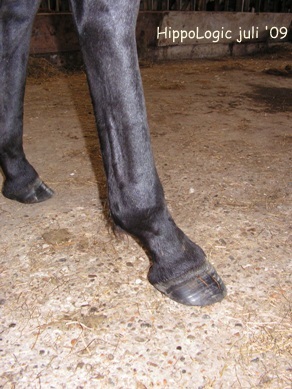
In this series I will keep you posted about the young horse I am training in order to prepare her for the next farrier visit. I will call her A. in this blog. A was scared to let people touch her legs, especially her hind legs. She kicked out whenever she felt something touching them.
In the previous blog I described the progress we made so far. I have only had one more session between this blog and the last one. That means that A. hasn’t been (clicker) trained for two weeks. Usually a horse benefits from a break in training.
Improvisation
In positive reinforcement training you have to improvise often. If something has changed in the circumstances we are used to in training, we can’t expect the same results. This is called a ‘context shift’.
Read more about context shifts in this article Setting your horse up for success: context shift
Horses and other animals, find it often hard to generalize. If we can touch their body with a pool noodle in the stall, it doesn’t necessarily mean that the horse knows what to do when we are stroking her with a pool noodle in her paddock or in the arena.
Last training session the circumstances changed: it was raining so A.’s neighbours were not outside, but stayed in her stalls. In previous training I used the fence between the stalls as a protective barrier between me and A. This time that was not an option: standing in the stall of a clicker trained horse B. while clicking and feeding horse A.
I pondered a moment about the possibilities. Since A. is used to being haltered and isn’t a dangerous horse, I chose to halter her and go train her in her stall.
The click
Horse B. was really determined to become a part of the training session, so I had to improvise again. Every time I clicked she expected a treat and she became a bit frustrated that the clicks weren’t meant for her.
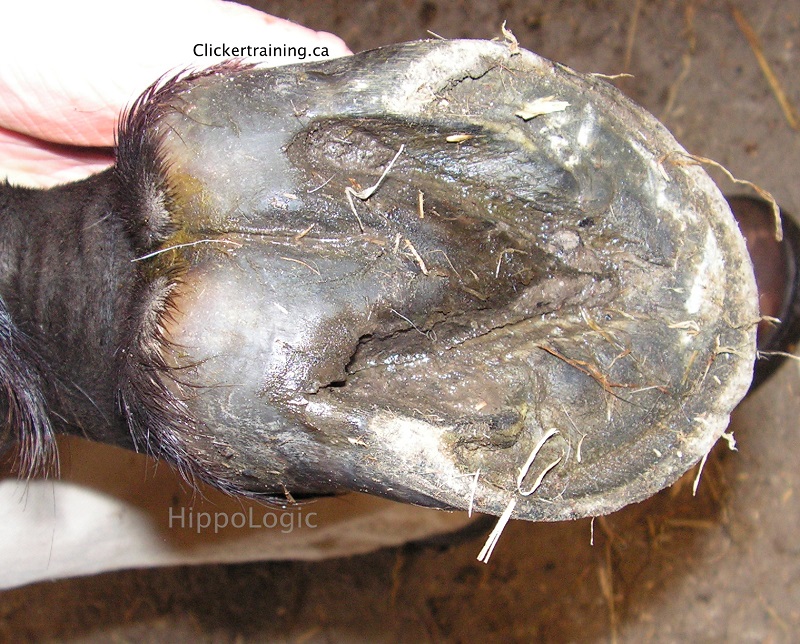
I offered horse B. a handful of pellets, my usual food rewards and gave her my end of session signal, to tell her that she wasn’t going to get any clicks. I chose to switch the mechanical click of the clicker for a very soft tongue click instead to train A. I quickly introduced her to the new marker signal. A. is very smart and quickly understood that my tongue click was an announcer for a treat.
I noticed that B. didn’t recognize the new marker and she went back to her hay to munch a bit. Time to start A.’s training.
There were also a few other things that were different this morning. I had haltered A. this time, there wasn’t a fence between us and we were standing in the center of her stall, in order not to be too close to the other horses. On top of that I also forgot my pool noodle on a stick.
How to handle a context shift
Because of all the changes that day I started repeating a lot of the previous lessons in this new setup: I started with touching her shoulder again. She didn’t move and she stayed relaxed so I tongue clicked and reinforced. Then I stroke her and let my hand move more towards her front leg. She was OK with that too: click and reinforce.
I moved my hand very slowly and I made sure I clicked and reinforced a lot. A. understood the exercises quickly. Within a few (tongue) clicks she lifted her front leg all by herself! It was just a fraction of a second, but worth a click and a handful of food.
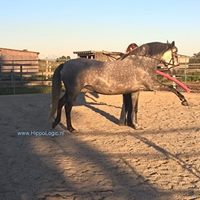
After a break we went on with lifting her front leg. Because I had given her a jackpot for lifting her leg she wanted to earn more food and she enthusiastically lifted her leg and swung it forward. Click & treat. I didn’t expect her to swing that leg to the front so my timing was exactly when she was performing a perfect jambette (like the picture of Kyra of the left). Oops.
The next try she did it again so I had to click much sooner: when she just lifted her leg from the floor. We will work on duration another time. I ended the training after lifting each of her front legs, without getting a jambette.
Related blogs:
Preparing your horse for the farrier with clicker training
Husbandry Skills: Hoof Care (part I)
Husbandry Skills: Hoof Care (part II)


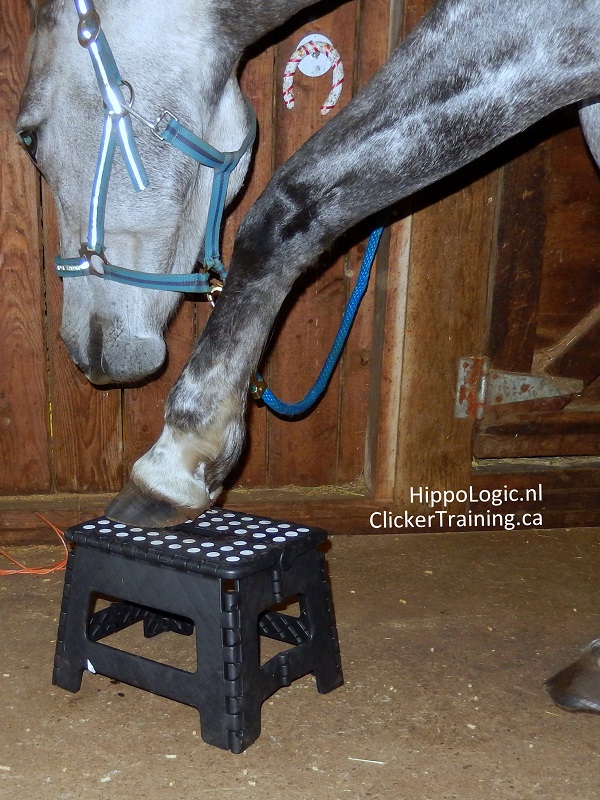
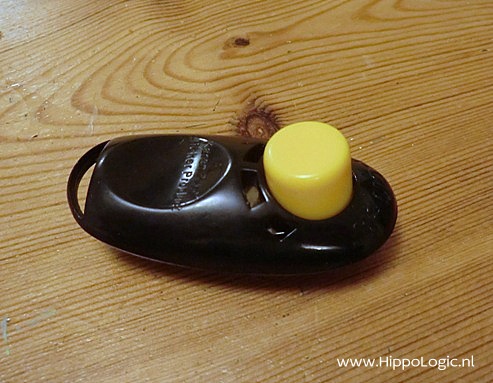

You must be logged in to post a comment.